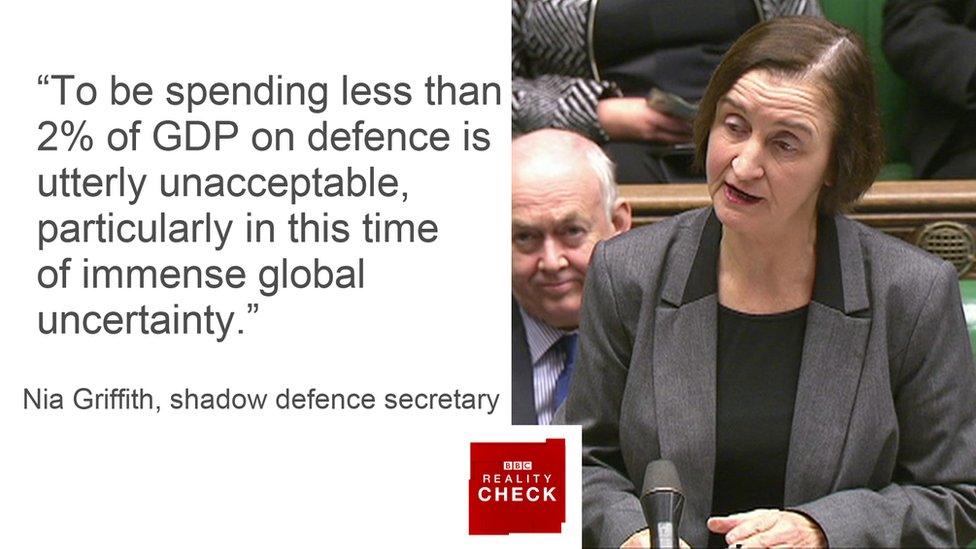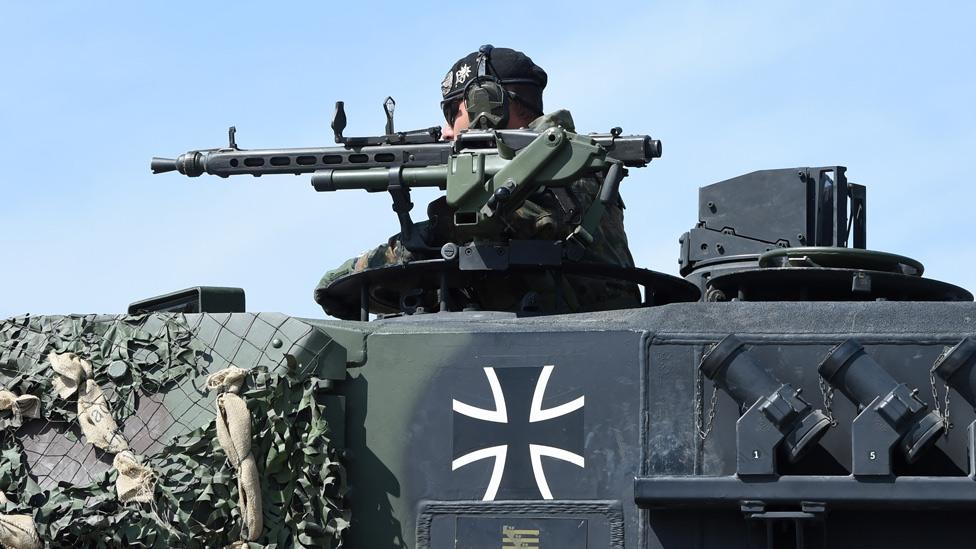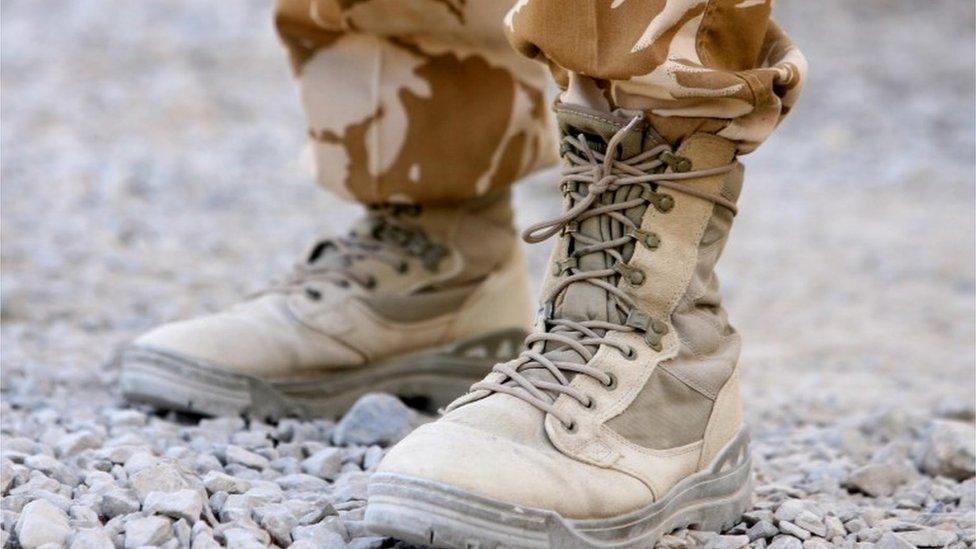Reality Check: Is the UK spending 2% of GDP on defence?
- Published

The claim: The UK's spending on defence fell below 2% of GDP in 2016.
Reality Check verdict: Nato has confirmed that its figures for 2016 show the UK is still meeting the 2% target, but won't release the full details until next month. The amount that the IISS claims that defence spending is below 2% of GDP is tiny by the standards of government spending, and may easily be erased by using different exchange rates or definitions of defence spending.
Defence think tank the International Institute for Strategic Studies (IISS) claimed on Tuesday that the UK had dropped below its pledge to spend 2% of GDP on defence, made in the Strategic Defence Review in 2015.
GDP is what you get when you add up all the goods and services produced in an economy. In the UK in 2016 it was about £1.87 trillion.
The IISS said that as a result of UK GDP being higher than expected, the UK had actually only spent 1.98% of GDP on defence in 2016.
The Ministry of Defence says that the IISS figures are wrong. It pointed to Nato figures saying that the UK spent 2.21% of GDP on defence last year.
That figure is based on analysis from Nato, external, which was published last July, meaning they were based on forecasts for both GDP and spending.
But Nato later said, external that it had looked at the final numbers for 2016 and could confirm that the UK was still meeting the 2% target, but it would not be releasing the full figures until next month.
The alliance said that the UK, US, Poland, Greece and Estonia met the target last year.
As this is a Nato target, it is Nato's methodology that is important. Before making the calculation, Nato converts both defence spending and GDP into US dollars at 2010 exchange rates and prices.
There are disagreements about what should and what should not count as military spending - whether pensions paid to soldiers' widows count, for example.
IISS has calculated the figure slightly differently, external. It gets to a figure of £38.3bn for UK defence spending in 2016 .
If you divide that by the ONS figure for GDP you get 2.05%, but that's not what the IISS has done. Because it is trying to make comparisons between different countries, it has converted all the figures into US dollars, using International Monetary Fund exchange rates and also used IMF GDP figures.
When you do that, you get to 1.98%.



- Published14 February 2017

- Published19 January 2017

- Published21 April 2016
